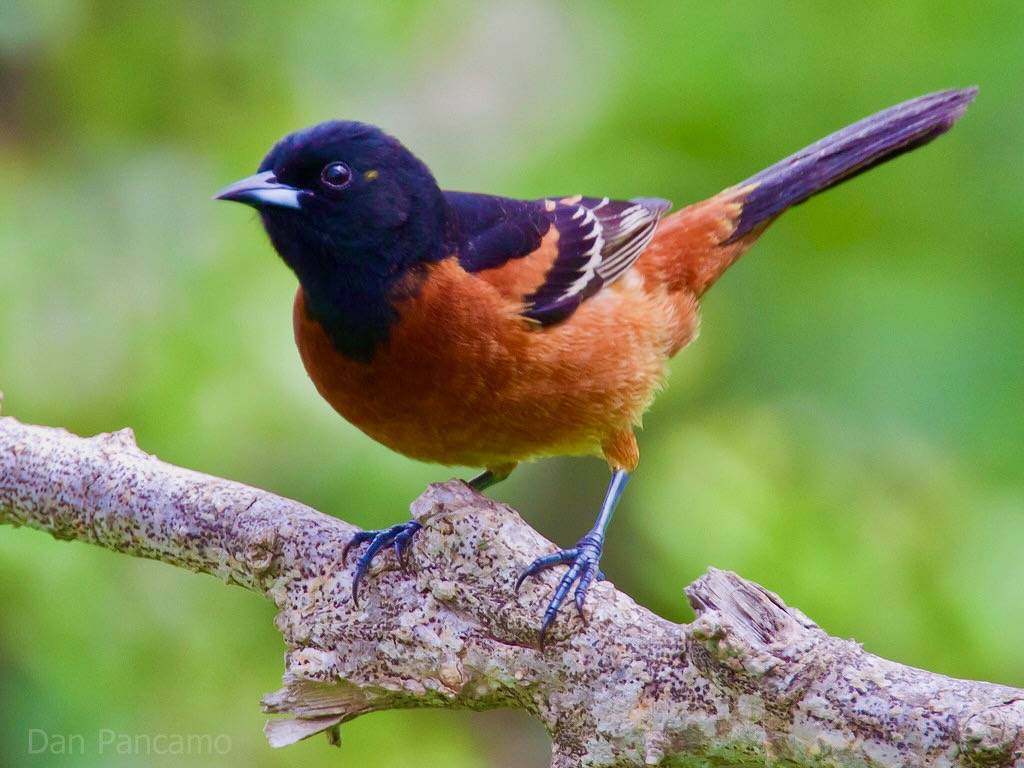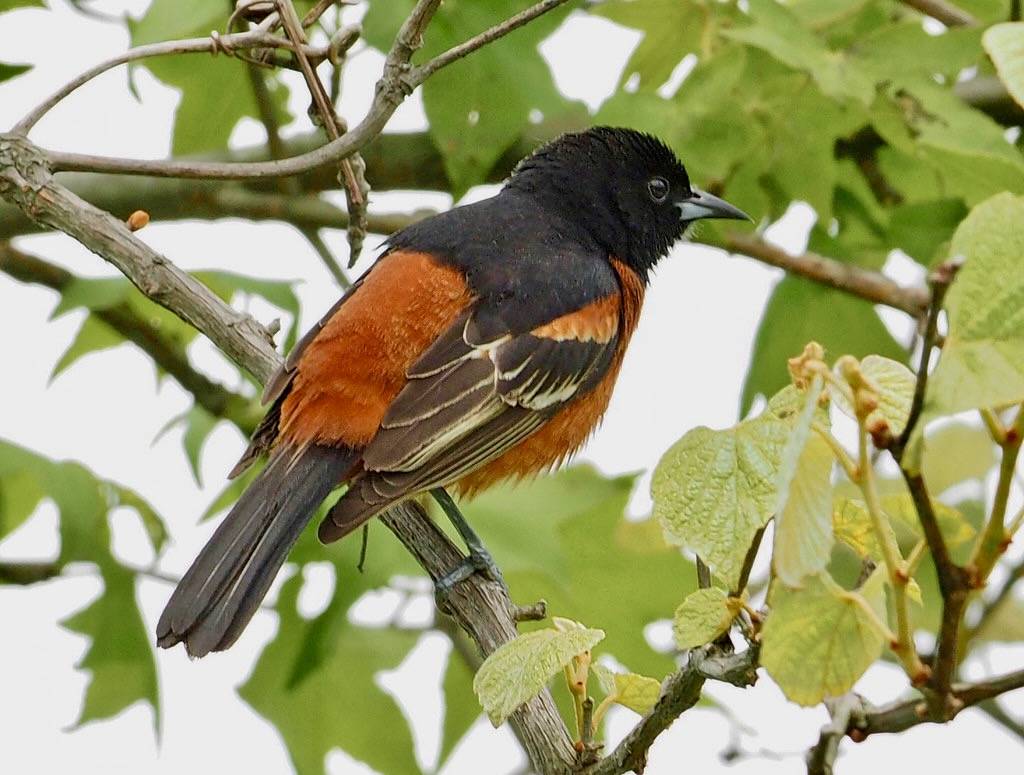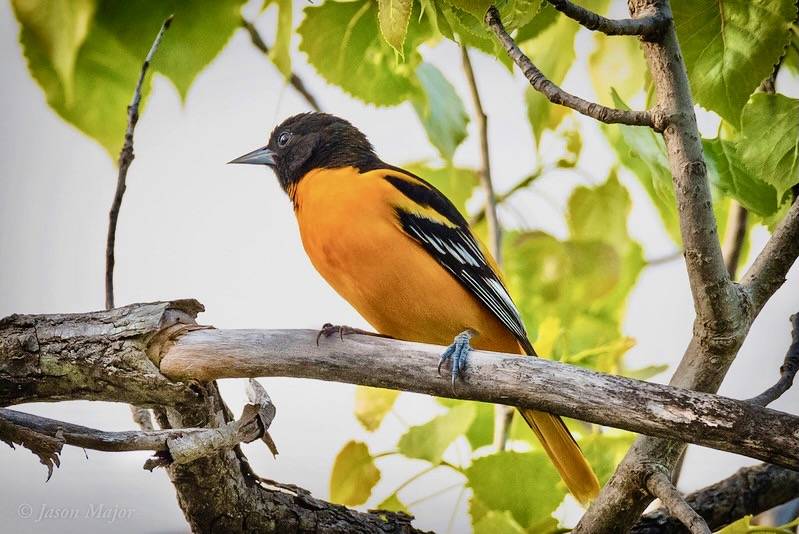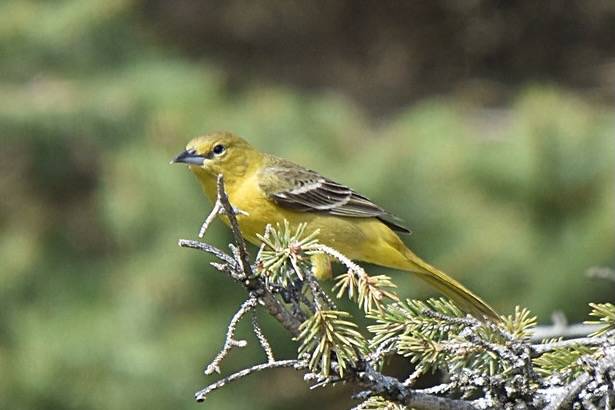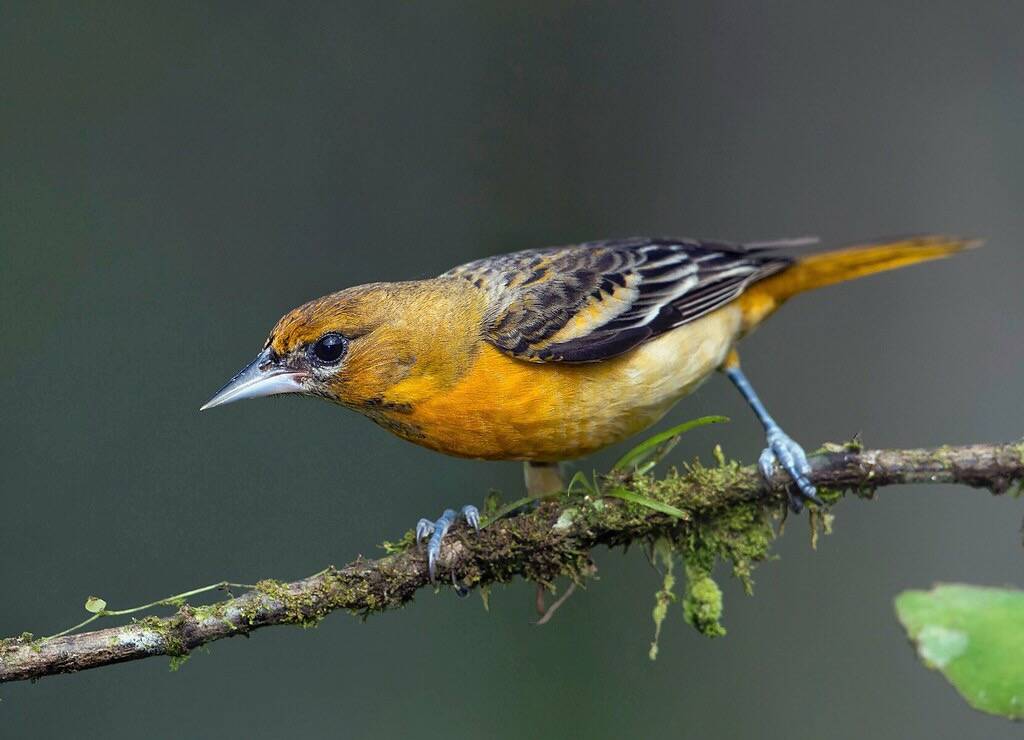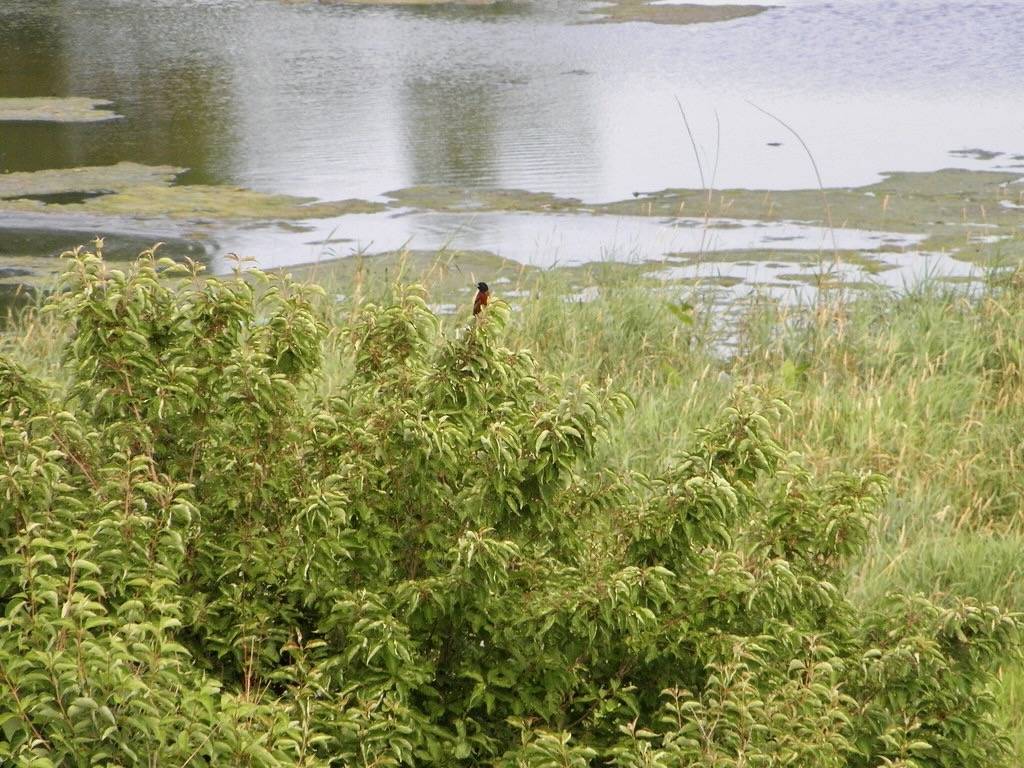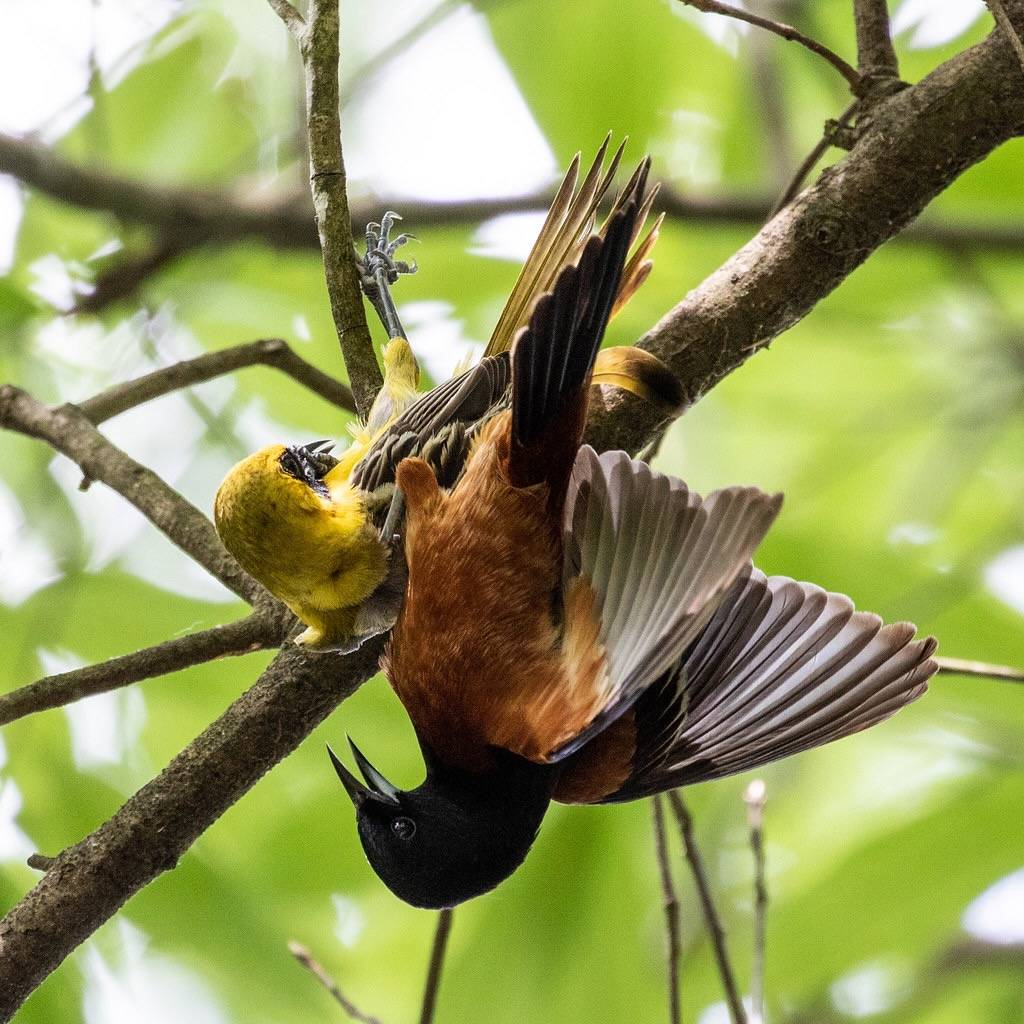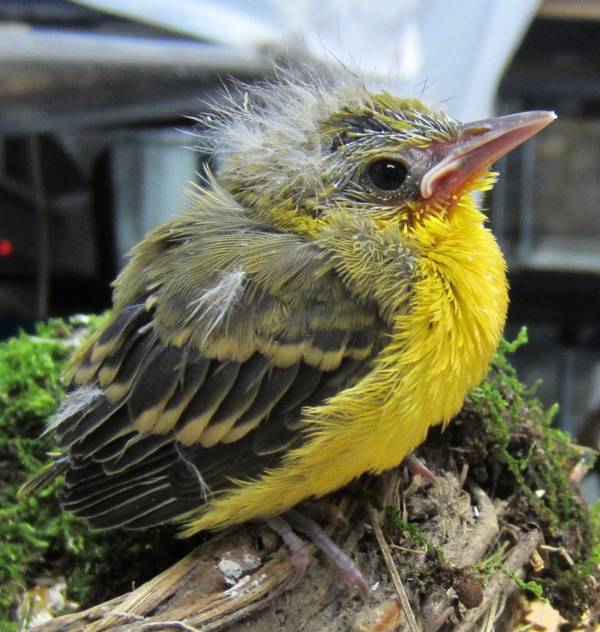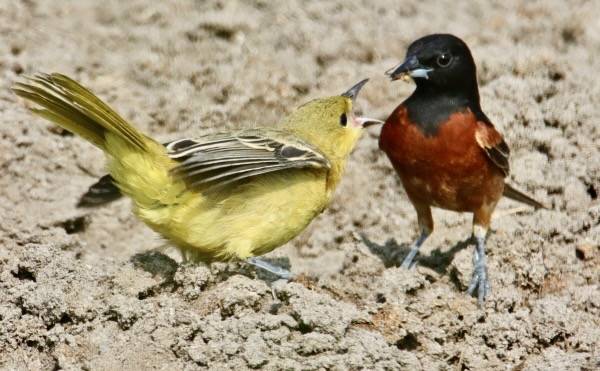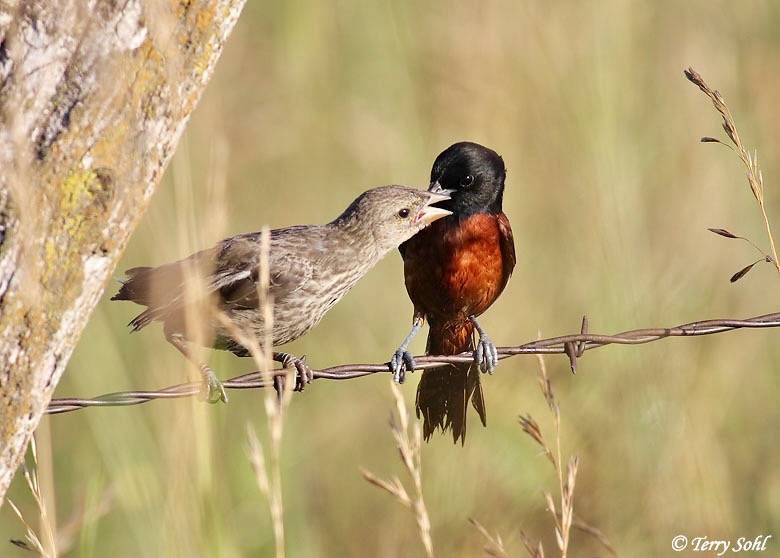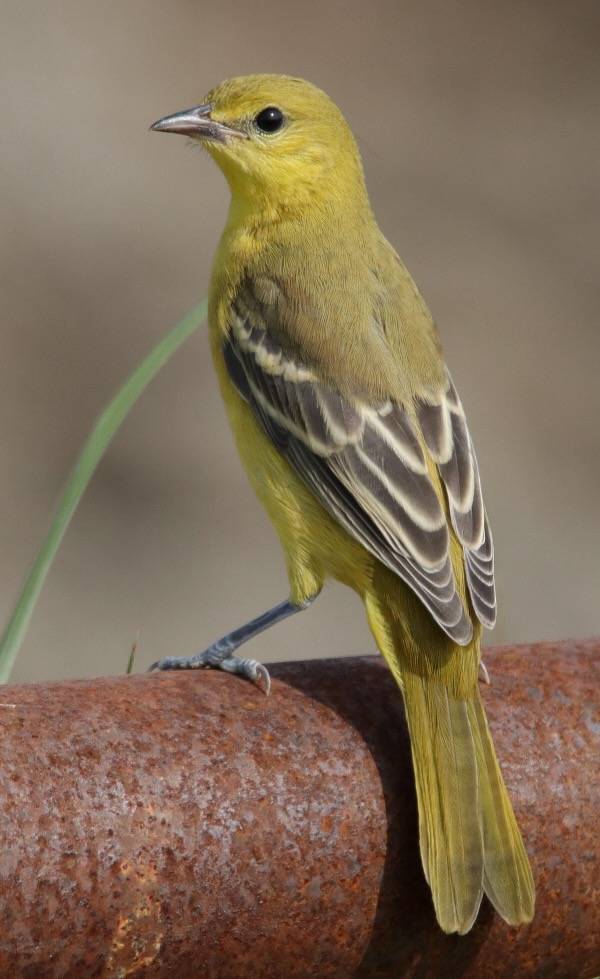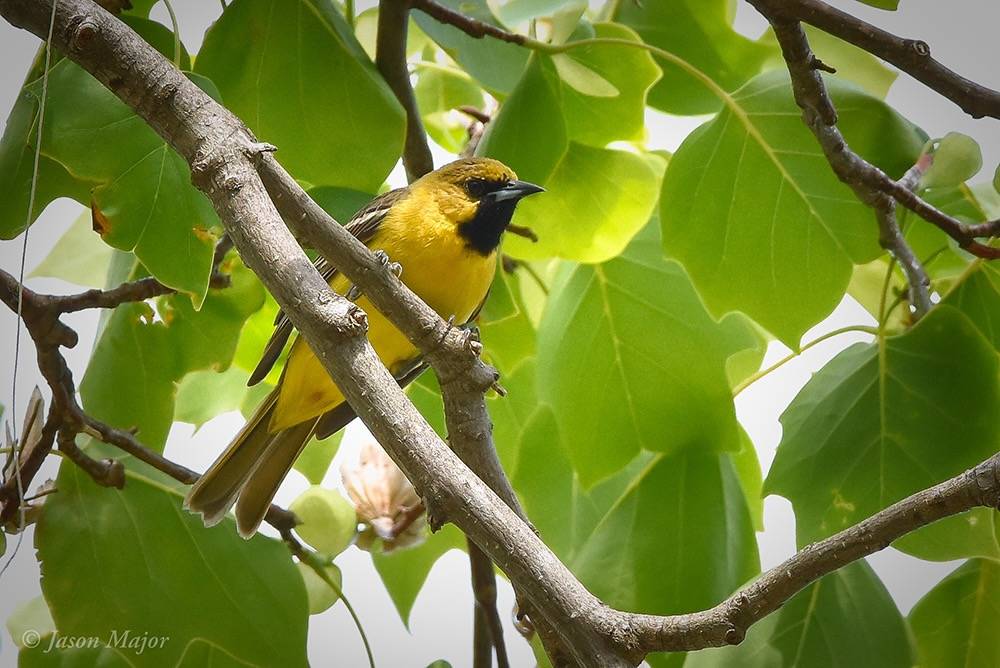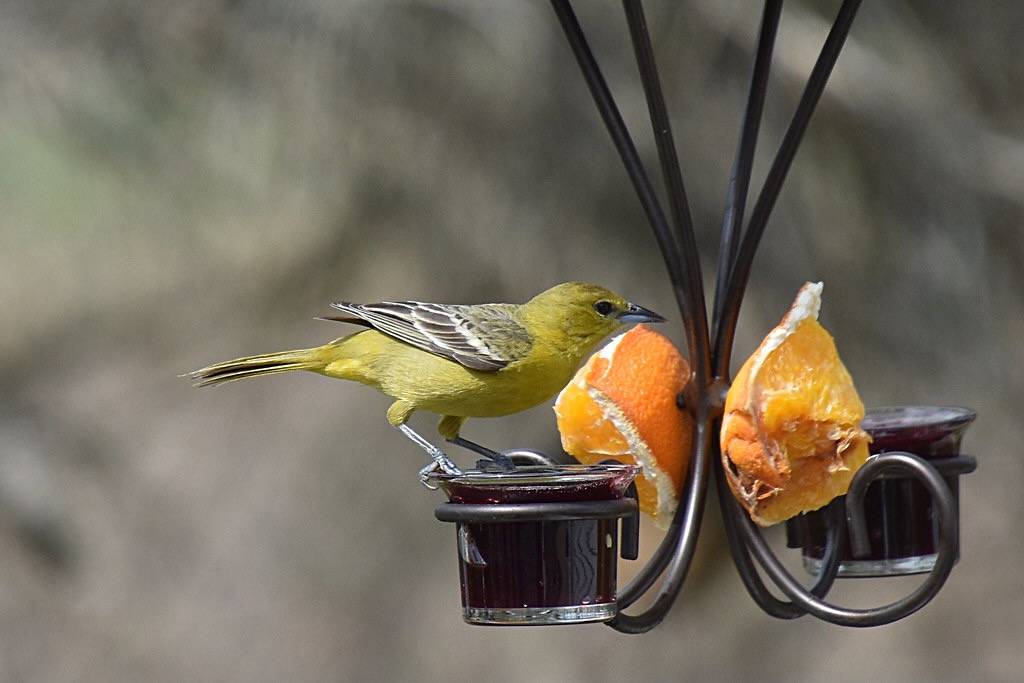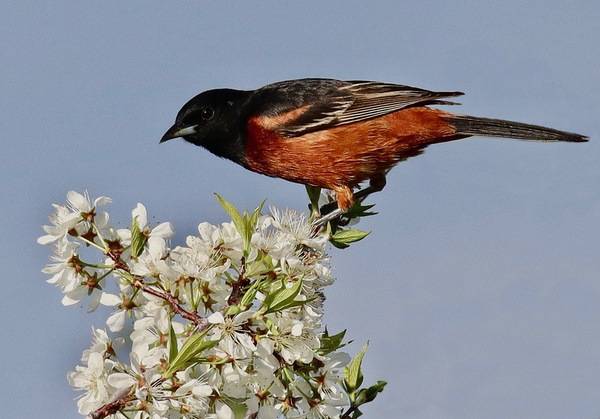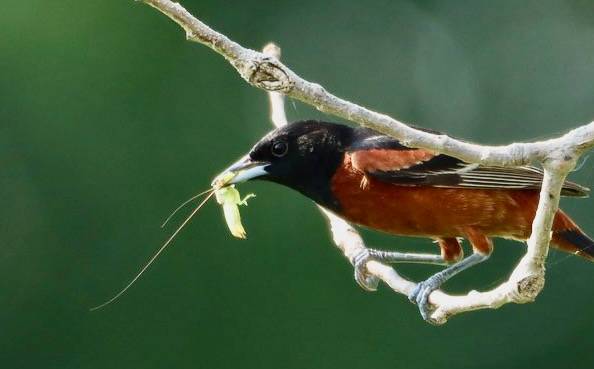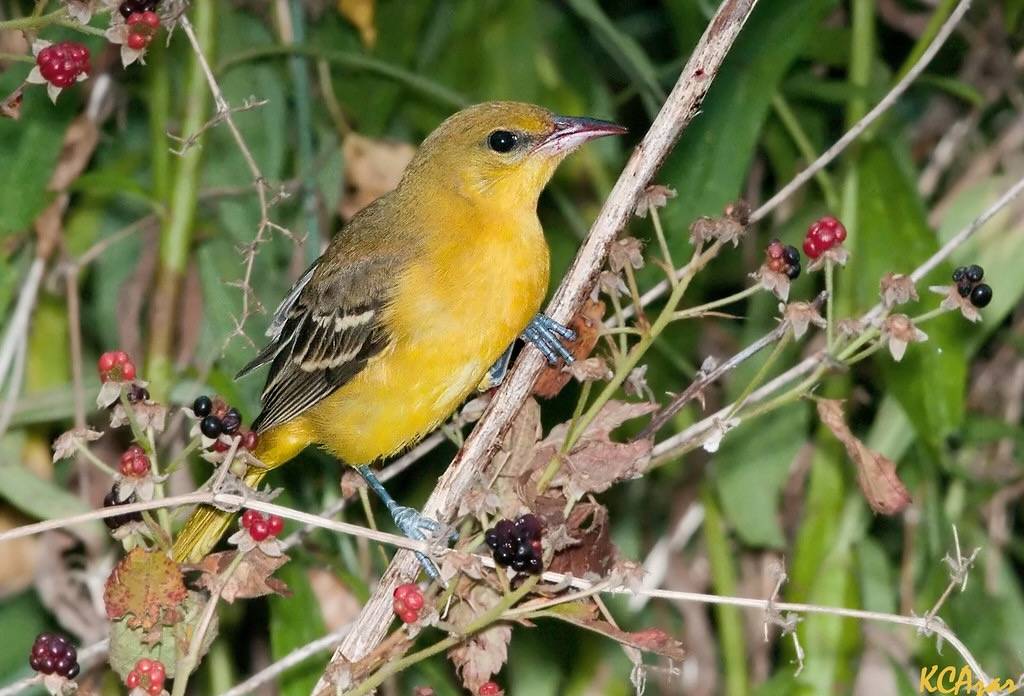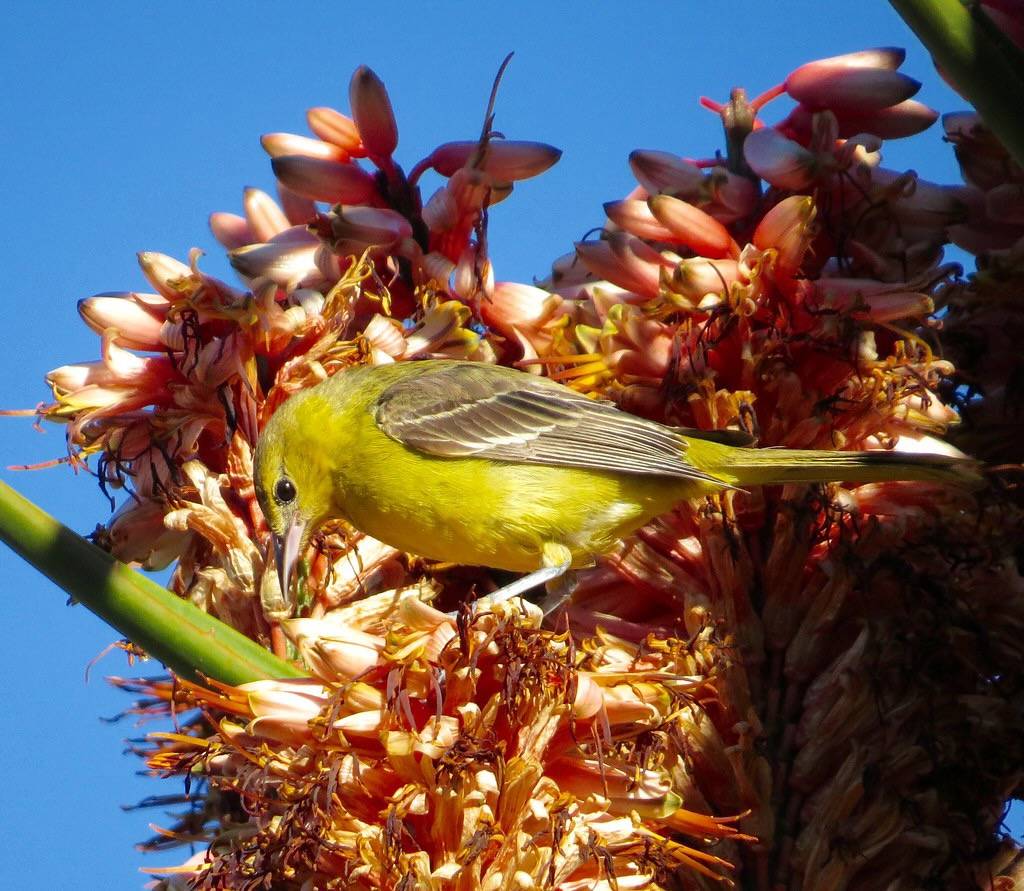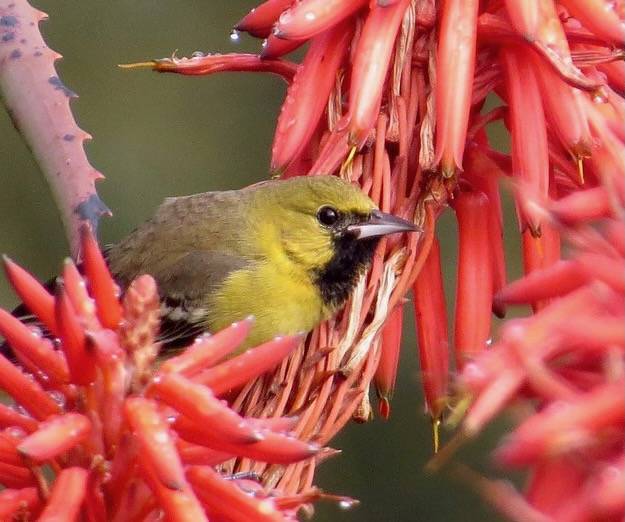Orchard Oriole
The Orchard Oriole is by far the rarer of two oriole species recorded for Salter Grove. According to data compiled for the park from 2002 through 2023, it has only been observed twice during spring migration, first in 2016 in vegetation near the midpoint of the Marsh Trail, and then again in 2023 in the small trees near the boat launch. In contrast, the larger Baltimore Oriole is seen and heard regularly during the breeding season, even though nests have not been observed within the park in recent years.
The male Orchard Oriole combines black, and dark burnt-orange in its striking plumage. The female has the same plumage pattern but the black areas are replaced by dark olive green, and the burnt-orange areas by a greenish yellow. The Baltimore Oriole male also has a similar plumage pattern but with less black at the base of the throat, and it is a lighter creamsicle-orange where the Orchard Oriole is burnt-orange.
The yellowish females of the two oriole species may be a bit harder to tell apart, but not impossible. The female Orchard Oriole is greenish yellow and does not have any orange tinge on its underparts. In contrast, the female Baltimore Oriole is tinged orange and may become more so with age. The Orchard Oriole female has a plain grayish yellow back whereas the same area is marked with streaks in the Baltimore Oriole female.
The Orchard Oriole breeds from southern Canada to northern Mexico in open woodland, or shrubby habitats along forest edges, especially near water bodies or wetlands. Generally not very territorial, it shares its nesting tree with other Orchard Orioles as well as other bird species, such as the American Robin, Baltimore Oriole, Chipping Sparrow, and the Eastern Kingbird. It is a Neotropical migrant that winters from central Mexico to northern South America where it inhabits tropical forest edges, lightly wooded areas, and open habitats such as pastures with trees.
During the breeding season, it gleans a great variety of insects and spiders from foliage. However, it becomes a frugivore during migration and on its wintering grounds. It is especially attracted to habitats that provide plentiful fruits, and flowers that produce large amounts of nectar and pollen. The Orchard Oriole is not attracted to feeders stocked with only seeds but appreciates orange segments and fruit jellies, even during the breeding season. It will also visit feeders with sugar solutions intended for hummingbirds.

